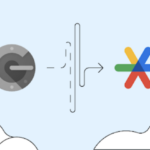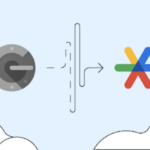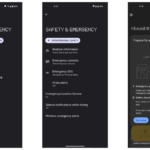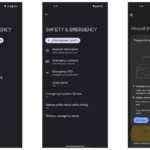With Android 4.4 KitKat, Google has introduced a lot of new, seemingly minor changes, that improve usability in a big way. The official KitKat page from Google only highlights a few features introduced in the OS, but there is more to KitKat than what is visible to the naked eye.
Below, I list down some of the major, minor and seemingly small changes that Google has introduced in Android 4.4 KitKat.
- One of the biggest changes in Android 4.4 KitKat is the new launcher. The new launcher provides quick and easy access to Google Now with just a simple swipe from the left edge of the screen.
- The new launcher allows for unlimited number of home screens. The icons have also been re-designed and have a much flatter look. They are bigger in dimension as well.
- The status bar and navigation bar is completely translucent on Android 4.4 KitKat/Nexus 5. However, this feature won’t be available to previous generation of Nexus devices.
- On the Nexus 5, users can say “Ok Google” whenever the screen is switched on to do a Google search.
- The same feature is already available for Nexus 4 owners using AOSP compiled ROMs.
- Google Now has received a slight visual makeover in KitKat.
- There is a new version of Roboto being used in the App drawer in KitKat.
- The Clock app has also been updated with new fonts and time picker.
- The Messaging app has been replaced by Hangouts with SMS and MMS integration. The app is also much faster than before.
- There is a new Music widget on the lock screen, which looks stunning. The same widget style also comes up whenever the user Chromecasts something from his or her phone.
- Applications can now take advantage of a new full screen mode, which hides the status and navigation bar, to provide an immersive reading experience.
- Google has not only optimised the core Android OS, but all of its apps as well for lower memory consumption. On a fresh boot, Android 4.4 KitKat only takes up 300MB of RAM on a Nexus 4.
- Android 4.4 KitKat allows developers to change the color of the Android system framework, according to their own wish. This will help in creating a better user experience.
- Most of the new core apps in KitKat are closed sources. This includes the launcher, Contacts/People app, and the new Email app as well.
- The Phone/Contacts app have received a major overhaul in Android 4.4 KitKat. The Phone app does not display the dialer when opened, but instead lists your most frequently called contacts.
- The Phone app can also display relevant information of an unknown number by looking up for it on Google Maps.
- Android 4.4 KitKat finally brings system wide emojis!
- A new version of QuickOffice comes pre-installed on the Nexus 5 with Android 4.4 KitKat
- There is a new storage access framework in Android 4.4 KitKat. Once all file storage clients are updated, users can access their apps from varying cloud services easily from anywhere.
- Google has added Bluetooth MAP support to Andorid 4.4 KitKat, which means better compatibility with car stereos and other devices.
- The web view engine now uses Chromium as its rendering engine.
- The stock email client has also been updated in KitKat with a slide-out style navigation drawer.
- The Settings tile has a new Gears icon in the Quick Settings.
- Android 4.4 KitKat adds support for Infrared Blaster. So apps can use the hardware on devices like the Galaxy S4 and HTC One GPe without any issues.
- The Downloads app in Android 4.4 KitKat has received a major UI makeover.
- There is a new version of Google Keyboard with Emoji support in Android 4.4 KitKat.
- There is a new option present under the Settings menu that allows for easy switching between different launchers.
- SELinux, which Google introduced in Android 4.2 Jelly Bean, has been set to “enforcing” mode in KitKat. While this means better security, it could also have unintended effects for root apps. (https://www.algerie360.com)
- KitKat allows system apps to record the activity going on the screen in MP4 format. However, this feature won’t be available to third party apps. Developers can use this feature via adb shell.
- KitKat introduces Audio tunnelling, along with low-power audio playback support.
- There is built-in support for printing in Android 4.4 KitKat.
- There is a new animation framework in Android 4.4 KitKat, which allows developers to create new motion oriented UX elements. Except richer animations in apps on Android 4.4 Kitkat.
- Wi-Fi TDLS support in KitKat means devices can transfer files to each other without burdening the network router.
- The Location settings has received a revamp and now allows switching between a Battery saving and Accuracy mode. It also displays the last app that used your location.
- The Google Voice Search engine is much faster and more accurate than before in Android 4.4 KitKat.
- Thanks to the Snapdragon S800 processor and KitKat, the Nexus 5 has built-in step-counting and other motion detecting abilities.
- Android 4.4 KitKat also includes hints to a new native run time compile – ART. The compiler is currently hidden and can only be accessed from the Developer options.
- There is a new open architecture NFC payment system in Android 4.4 KitKat that allows for host-card emulation.
If there is something missing from the above list, do drop in a comment and let me know!



























